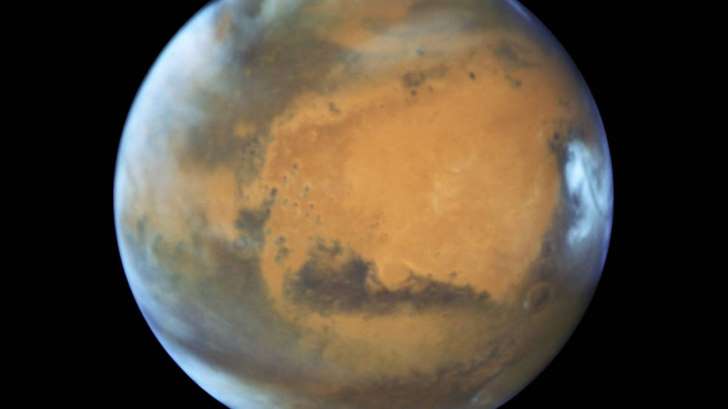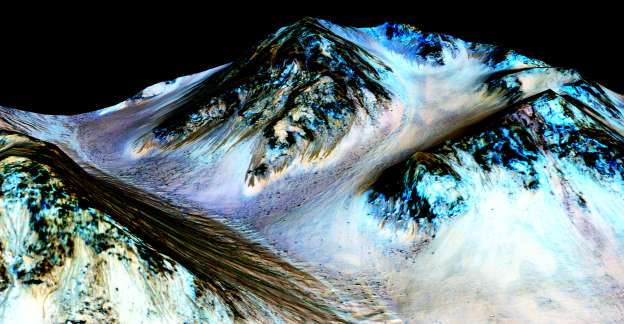May 22, 2016
A dynamic seasonal planet – bright and frosty polar caps above a vivid rust-coloured landscape – has been revealed in the latest pictures of Mars.

Mars as seen by the Hubble telescope Pic: NASA
May 22, 2016
A dynamic seasonal planet – bright and frosty polar caps above a vivid rust-coloured landscape – has been revealed in the latest pictures of Mars.

Mars as seen by the Hubble telescope Pic: NASA
The images were captured by NASA's Hubble Space Telescope on 12 May, when the planet was 50 million miles from Earth. They are so detailed that they show areas as small as 20 to 30 miles across.
Far to the right is the large dark region of Syrtis Major Planitia, one of the first things identified on the planet's surface in the 17th century. The image does not show that Syrtis Major is an ancient and inactive shield volcano, because the late-afternoon clouds are obscuring its summit.
To the south of Syrtis Major is Hellas Planitia basin, which is about 1,100 miles across and nearly five miles deep. It is about 3.5 billion years old and was formed after an asteroid hit the planet.
In the centre of the image is Arabia Terra, the vast orange area which covers 2,800 miles of deeply cratered and eroded land that may be among the planet's oldest landscape.

New evidence suggesting the presence of water on the surface of the Red Planet has been discovered by NASA's Mars Reconnaissance Orbiter (MRO). According to images obtained using imaging spectrometer on MRO, three dark streaks appear to flow down steep slopes during warm seasons and fade when the temperature falls below 10 degrees Fahrenheit (minus 23 Celsius). The above image was published by Nature Geoscience on Sept. 28, 2015. Let’s take a look at other iconic images from the space.
Clouds can be seen over the southern polar cap.
On 22 May, the sun and Mars will be on the exact opposite sides of Earth, at a distance of 47.4 million miles. Mars will be lit up by the sun and especially photogenic during this time, say experts from NASA.
On 30 May, Mars will be the closest it has been to Earth in 11 years – just 46.8 million miles.
The planet will be visible for much of the night if the skies are clear and should be able to be seen without a telescope or binoculars.
At its furthest, the distance between Earth and Mars can reach up to 250 million miles but the closest was in August 2003, when the two planets were just 35 million miles apart. If you missed that chance to see it, you will be disappointed to know it will be another 300 years before the planets get that close again.
Courtesy: Sky News







































































































